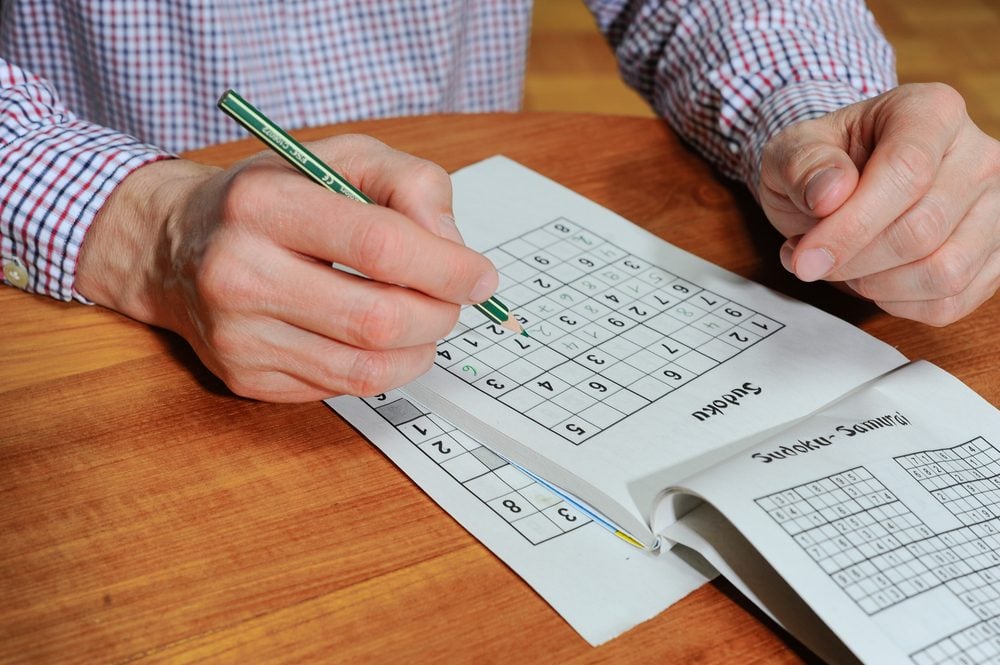
Learn how to play Sudoku
There’s a lot more to Sudoku strategy than simply writing numbers in a row and column. Sitting down before a fresh Sudoku grid and playing Sudoku requires logic, not guesswork, and a substantial knowledge of Sudoku solving techniques. Once you know these Sudoku tips, you will be able to solve even the most challenging puzzle.
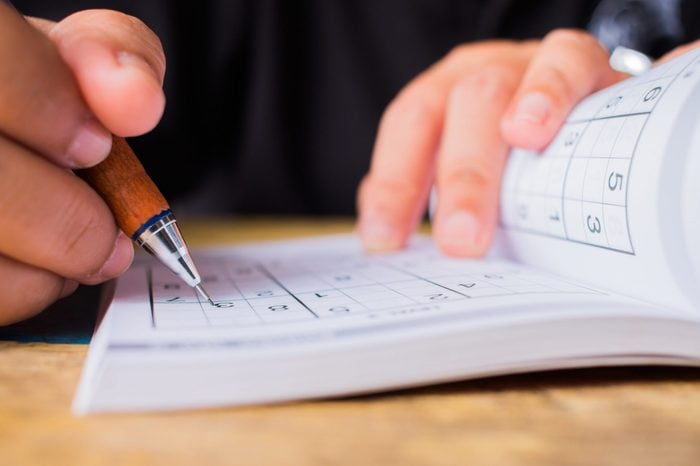
What are the basic rules of Sudoku?
You can read all the Sudoku tips you want, but you need more than an understanding of Sudoku rules and a Sudoku strategy to be a true puzzle master. “The best Sudoku players know how to cut through the visual clutter of a Sudoku grid and start scanning immediately for the most valuable clues and information that they need,” reports Sudoku.com. Other Sudoku players have the ability to “switch off their minds to the outside world and focus for hours to solve Sudoku puzzles.”
If you prefer words to numbers, check out these crossword puzzle secrets.
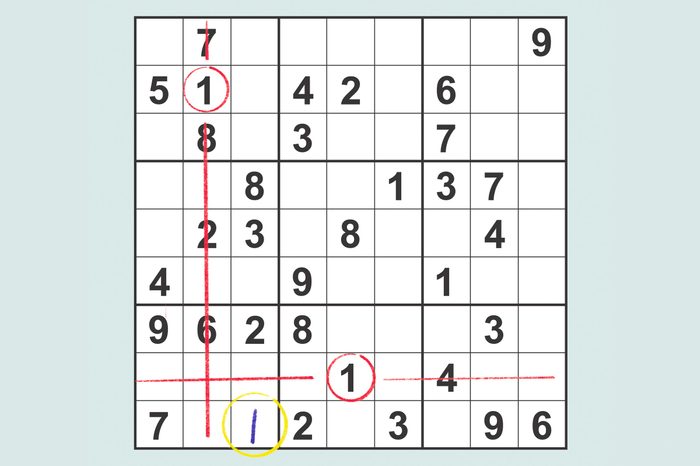
What are Sudoku techniques?
There are more than a few techniques to solve a Sudoku puzzle, but per Conceptis Puzzles, the easiest way to a Sudoku solution is to, “Scan rows and columns within each triple-box area, eliminating numbers or squares and finding situations where only a single number can fit into a single square.” If you’re looking to learn how to play Sudoku, the scanning technique is a swift and generally efficient method of solving easy Sudoku puzzles from start to finish and can get players far into more difficult puzzles before switching to an advanced Sudoku strategy.
Don’t forget to check out these printable sudoku puzzles that’ll test your smarts.
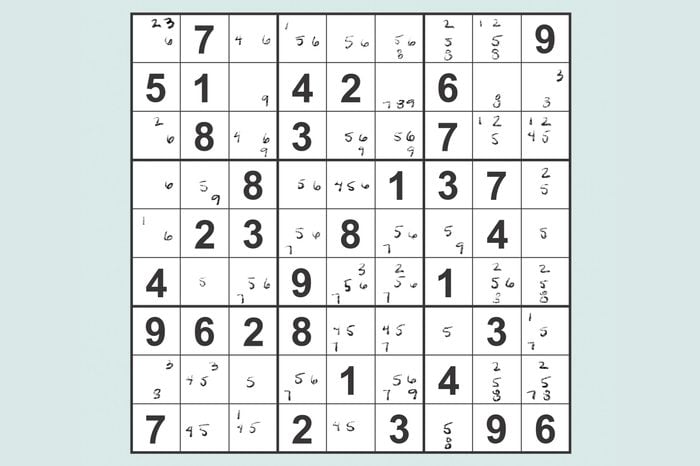
What is pencil marking in Sudoku?
Sudoku pencil marking is a systematic Sudoku solver strategy in which puzzle doers use a pencil to write small numbers inside the squares, denoting which numbers may fit in. Conceptis Puzzles says that, “After pencil marking the puzzle, the solver must analyze the results, identify special number combinations, and deduce which numbers should be placed where.” Pencil is, of course, easy to erase in a hurry once you find the solution—or realize you made a mistake.
Your pencil won’t help you find the missing number in this puzzle.
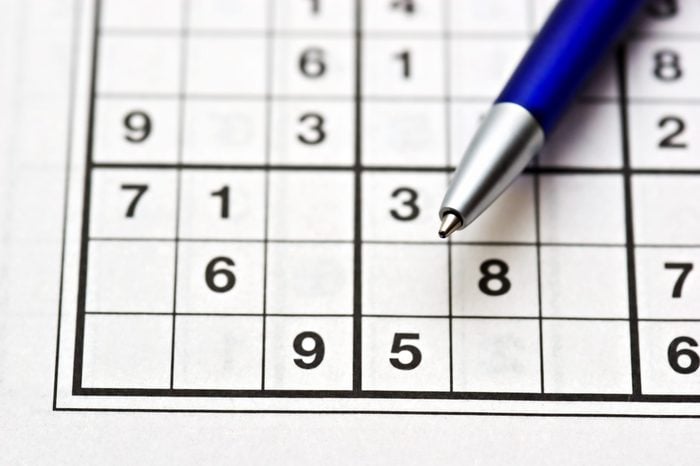
Can all Sudoku puzzles be solved without guessing?
According to Sudoku Of The Day, “Sudoku is a puzzle involving logic—no arithmetic or guessing is required!” While you can, guess, of course, if your guess is wrong, it will throw off the rest of the puzzle and you’ll need to start over.
If you can solve these math riddles, you may just be a genius.
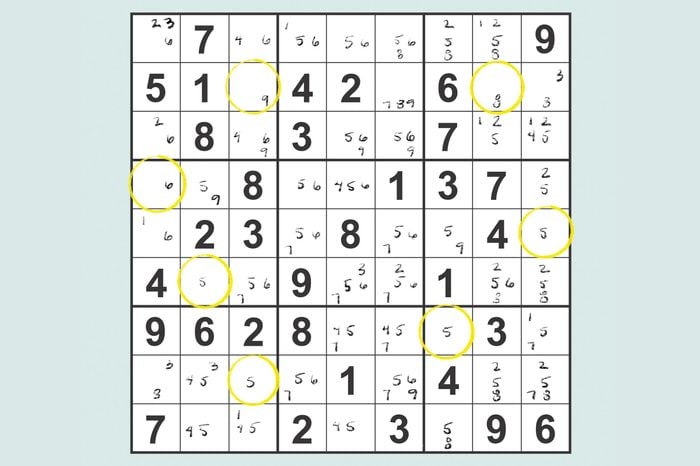
What is a Sudoku single candidate?
A single candidate is a very easy Sudoku strategy for solving a puzzle. Sudoku of the Day says this Sudoku strategy involves “Using pencil marks to store what candidates are still possible within each cell.” The site continues on to note that, “By then examining the surrounding column, row, and box, a single candidate means you’ve managed to rule out all other possibilities for a particular cell,” leaving just a single number left that could possibly fit. Want another challenge?
Here are brain teasers that’ll leave you stumped.
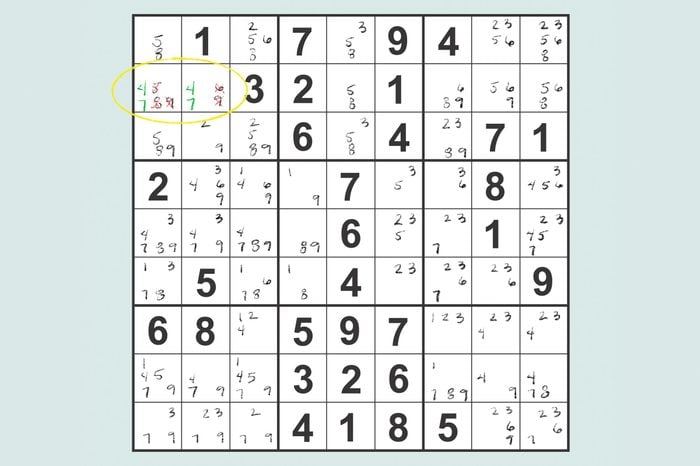
What is a hidden pair in Sudoku?
A hidden pair in Sudoku is “When a pair of numbers appear in exactly two squares in a row, column, or block, but those two numbers aren’t the only ones in their squares,” according to thonky.com.
If you’re in the mood for a more visual exercise, check out these optical illusions that will blow your mind.
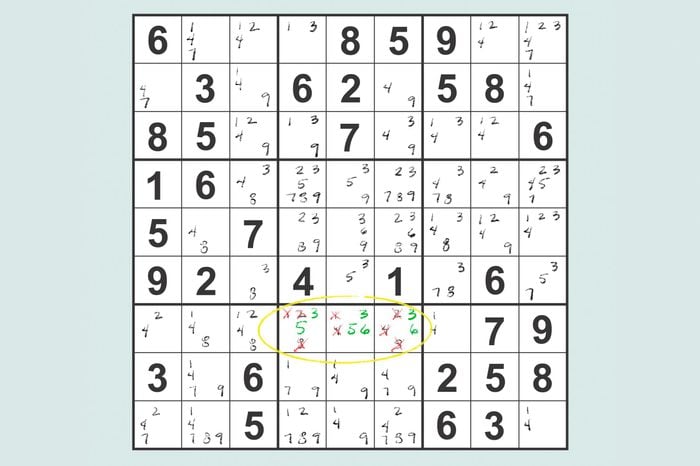
A hidden triple in Sudoku is similar
Thonky.com explains that like a hidden pair, a hidden triple in Sudoku, “Occurs when three cells in a row, column, or block contain the same three numbers or a subset of those three. The three cells also contain other candidates.”
Don’t miss these 20 brain-teasing puzzles that will get your brain buzzing.
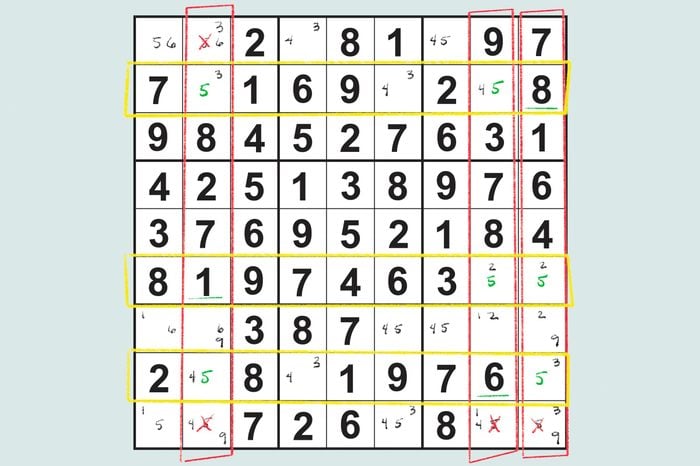
What is the swordfish technique in Sudoku?
You won’t need a Sudoku strategy involving the swordfish technique when just learning how to play Sudoku—not every puzzle has a swordfish pattern—but as you progress, you may run into this technically challenging puzzle pattern—and it may confound you. “A Swordfish pattern occurs when three rows (or three columns) each contain two or three cells that hold a matching locked candidate,” according to Sudoku Essentials. This candidate must reside in each of the three rows and share the same three columns or vice versa.”
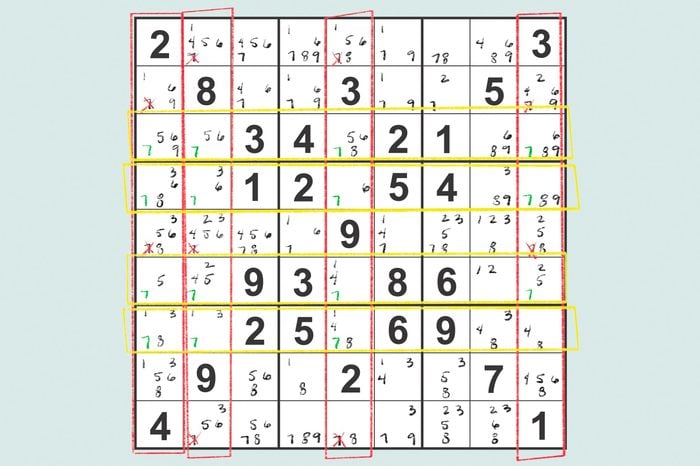
What is a jellyfish in Sudoku?
A jellyfish is when, “Four columns have a candidate in only four different rows, or vice versa,” per Sudoku Snake. The self-described, most advanced Sudoku application goes on to say that a jellyfish is like an, “X-Wing or Swordfish expanded into four units. The columns or rows that have these candidates are the primary units, and must only contain the candidates in the other four rows or columns called the secondary units. All other candidates in the secondary units can be eliminated.”
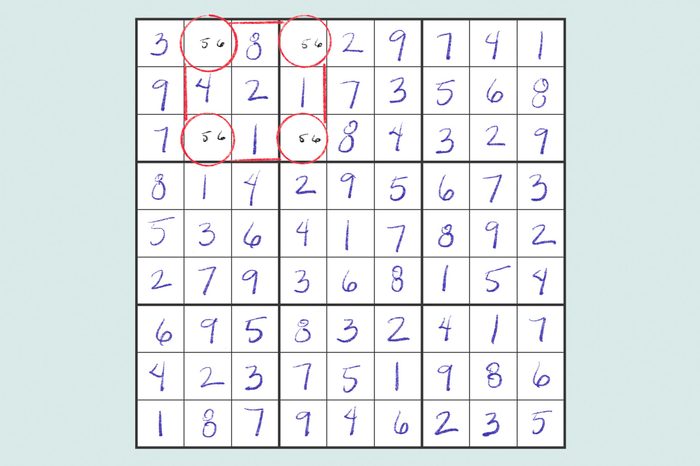
What is a unique rectangle in Sudoku?
Somewhat of a controversial subject in the Sudoku world, a unique rectangle (UR) is a situation in which a puzzle may have two different solutions. Hodoku notes that, “A unique rectangle consists of four cells that occupy exactly two rows, two columns, and two boxes. All four cells have the same two candidates left (in real Sudoku, not all cells have to hold all of the UR candidates).”
Ready for more? Try these 17 hard math problems that will make your head spin.
